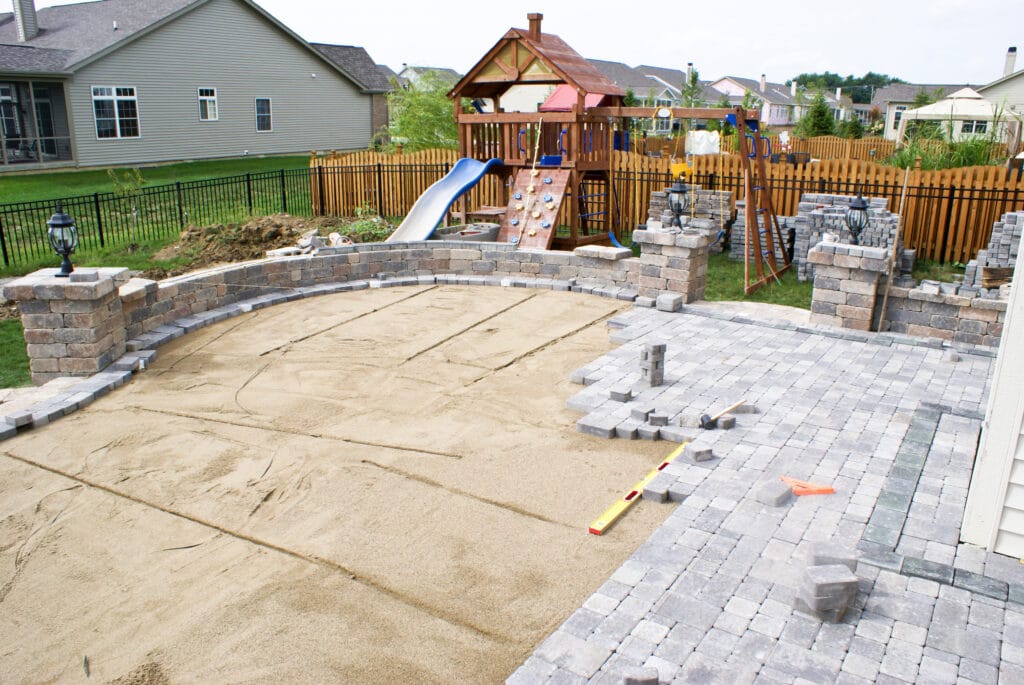
Patio Design and Construction
A well-designed patio is a delightful extension of your home, offering an outdoor oasis where you can relax, entertain, and enjoy the beauty of nature. Whether you envision a cozy retreat or a grand entertainment space, careful planning and thoughtful construction are key to achieving a patio that meets your needs and enhances your lifestyle. In this guide, we will explore the various aspects of patio design and construction, providing you with valuable insights to create a stunning outdoor space.
Planning your Patio: Before diving into construction, it is crucial to develop a comprehensive plan for your patio. We offer best Patio Installation. Consider the following factors:
a. Purpose and Function: Determine how you intend to use your patio. Will it primarily serve as a relaxation area, a dining space, or a combination of both? Understanding your desired functions will guide the design process.
b. Location: Evaluate your property to find the ideal location for your patio. Consider factors such as sunlight exposure, proximity to your home's entrance, privacy, and the surrounding landscape.
c. Size and Shape: Assess the available space and consider the size and shape of your patio. Ensure it complements your home's architecture and fits well within the overall layout.
d. Materials and Style: Choose the materials and style that align with your aesthetic preferences and budget. Options range from classic brick and concrete to natural stone, pavers, or even composite materials.
e. Landscaping and Accessories: Think about how your patio will integrate with the surrounding landscape. Consider incorporating greenery, lighting, water features, and outdoor furniture to create a harmonious outdoor environment.
Patio Construction Process: Once your plan is in place, it's time to begin the construction phase. While the complexity of the construction process may vary depending on the design, here are some general steps to follow:
a. Site Preparation: Clear the area where your patio will be built. Remove any vegetation, rocks, or debris. Level the ground and consider installing a weed barrier to prevent weed growth.
b. Foundation: Establish a sturdy foundation for your patio. This typically involves excavating the area, laying a base of compacted gravel or sand, and constructing a border using edging materials to contain the patio surface.
c. Patio Surface: Install the chosen patio surface material according to the manufacturer's instructions. This may involve laying bricks, pouring concrete, placing pavers, or arranging natural stones. Ensure proper alignment, spacing, and a level surface.
d. Edging and Retaining Walls: If your patio design includes edging or retaining walls, construct them at this stage. These elements not only add visual interest but also provide structural support and delineation.
e. Drainage and Irrigation: Consider the drainage needs of your patio to prevent water accumulation. Install a proper slope or drainage system to direct water away from the patio surface. If desired, incorporate an irrigation system to keep plants and greenery hydrated.
f. Finishing Touches: Pay attention to the finer details that will enhance the functionality and aesthetics of your patio. This may include installing outdoor lighting, a fire pit, seating areas, or decorative elements like pergolas, arbors, or trellises.
Maintenance and Upkeep: To ensure the longevity and beauty of your patio, regular maintenance is essential. Here are some maintenance tips:
a. Cleaning: Sweep or hose down your patio regularly to remove dirt, leaves, and debris. For stubborn stains, use appropriate cleaning products recommended for your patio surface material.
b. Sealing: If your patio is made of porous materials like concrete or natural stone, consider applying a sealant to protect against stains, weathering, and wear.
c. Repairs: Address any cracks, chips, or damage to your patio promptly. Depending on the extent of the damage, you may need to replace individual pavers or seek professional assistance.
d. Seasonal Care: Adjust your patio maintenance routine to the changing seasons. Prepare for winter by storing or covering outdoor furniture, clearing snow promptly, and preventing ice buildup.
Engaging Professional Help: While a small, simple patio may be a DIY project for some homeowners, larger or more complex designs often benefit from professional expertise. Experienced patio designers and contractors can guide you through the planning process, offer valuable insights, and ensure proper construction techniques and permits.
Creating a beautiful and functional patio requires careful consideration of design elements, meticulous construction, and regular maintenance. By following these guidelines and collaborating with professionals when needed, you can transform your outdoor space into a captivating oasis that enriches your lifestyle and enhances the value of your home.

